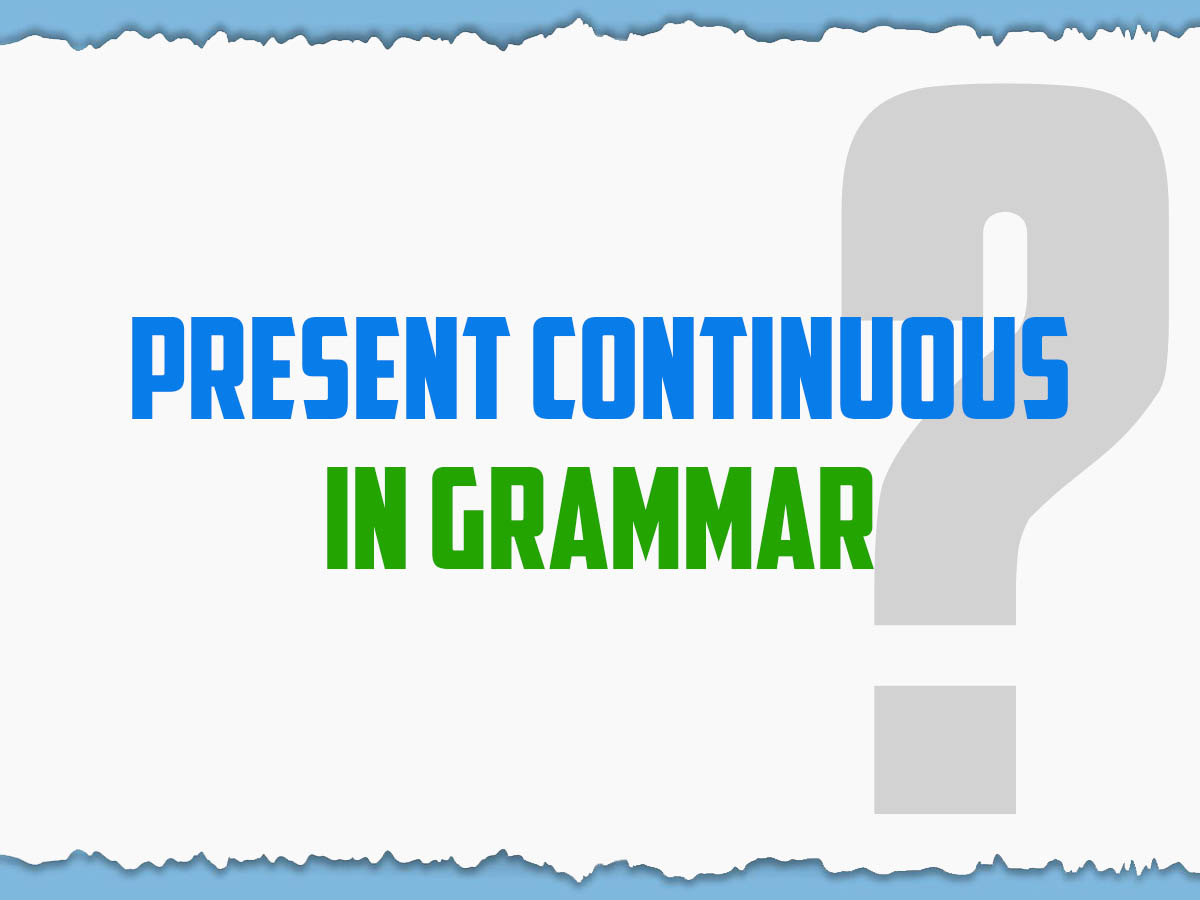Have you ever wondered why English speakers sometimes say things like “I am typing,” “She is reading,” or “They are dancing”? If you’ve stumbled upon such sentences and scratched your head, don’t worry; you’re not alone! Let’s delve into the intricacies of one of the fundamental aspects of English grammar – the Present Continuous tense.
Unraveling the Mysteries of the Present Continuous in Grammar
Before we dive into the depths of present continuous, let’s understand what a tense actually is. In grammar, tense indicates the time of an action, whether it’s past, present, or future. Each tense has its own unique forms and uses. The Present Continuous tense, also known as the Present Progressive, is one of the essential tenses used to describe actions happening at the moment of speaking or actions currently in progress.
Understanding Present Continuous
Definition and Basics
The Present Continuous tense is formed by combining the present tense of the verb “to be” (am, is, are) with the base form of the main verb and the -ing suffix. This tense is primarily used to describe actions that are happening right now or actions that are ongoing.
Forming the Present Continuous
To form the present continuous, you conjugate the verb “to be” according to the subject (I am, you are, he/she/it is, we/you/they are) and add the present participle (the base form of the verb + -ing). For example:
- I am typing.
- She is reading.
- They are dancing.
Usage and Examples
Present continuous is used to describe actions happening at the moment of speaking, ongoing actions, and temporary situations. For instance:
- “I am writing an article.”
- “She is studying for her exam.”
- “They are having dinner.”
Key Characteristics
Duration and Ongoing Actions
One of the key characteristics of the present continuous tense is that it denotes actions that are currently happening or ongoing. It emphasizes the duration of the action and suggests that it’s in progress.
Raed More: What’s the Correct Past Tense of Hide? Hid or Hidden?
Temporary Situations
Present continuous is also used to describe temporary situations or actions that are not permanent. For example, “He is staying with his friend until he finds a new apartment.”
Future Arrangements
Interestingly, present continuous can also be used to talk about future arrangements, especially when they are fixed and definite. For instance, “We are meeting for lunch tomorrow.”
Signal Words
Indicators of Present Continuous
Certain words and phrases signal the usage of the present continuous tense. Some common ones include:
- Now
- At the moment
- Currently
- Right now
Differentiating from Other Tenses
It’s important to differentiate between present continuous and other tenses, such as present simple or present perfect. While present continuous describes actions happening at the moment, present simple is used for habitual actions or general truths, and present perfect describes actions that have been completed recently.
Common Mistakes
Confusing with Other Tenses
One common mistake learners make is confusing present continuous with other tenses, especially present simple. Remember, present continuous is used for actions happening now or ongoing, while present simple is used for habitual actions.
Misuse of Signal Words
Another pitfall is misusing signal words. Using signal words like “now” or “at the moment” when the action is not happening currently can lead to confusion. Always ensure the timing aligns with the usage of present continuous.
Advantages in Communication
Expressing Immediacy
Present continuous is invaluable for expressing immediacy and emphasizing the ongoing nature of an action. It adds depth and liveliness to your communication.
Describing Dynamic Situations
When you want to paint a vivid picture of a dynamic situation or event unfolding, present continuous comes to the rescue. It captures the essence of the action as it happens.
Conveying Future Plans
As mentioned earlier, present continuous can be used to talk about future arrangements, making it a versatile tool for discussing upcoming events or plans with certainty.
Present Continuous in Real Life
Everyday Scenarios
In our daily lives, we often use present continuous without even realizing it. Whether we’re talking about our current activities, describing what’s happening around us, or making plans, present continuous is there.
Work and Leisure
From work-related tasks like “I am attending a meeting” to leisure activities like “She is watching a movie,” present continuous helps us communicate effectively in various contexts.
Tips for Proper Usage
Contextual Awareness
Pay attention to the context in which you’re using present continuous. Consider the timing of the action and whether it aligns with the tense’s usage.
Attention to Signal Words
Be mindful of signal words that indicate the need for present continuous. Using them appropriately enhances clarity and precision in your communication.
Avoiding Common Errors
Practice makes perfect! Keep practicing the correct usage of present continuous to avoid common errors and improve your grammar skills over time.
Advancing Grammar Skills
Progressive Tense Expansion
Once you’ve mastered present continuous, challenge yourself by exploring other progressive tenses like past continuous or future continuous. Understanding their nuances will deepen your understanding of English grammar.
Practice Exercises
Engage in grammar exercises or quizzes to reinforce your knowledge and sharpen your grammar skills. There are plenty of resources available online to help you practice.
FAQs about the Present Continuous
Q: Can the present continuous be used for actions in the past?
A: No, the present continuous is used exclusively for actions or situations that are happening at the present moment or are currently in progress.
Q: How do I differentiate between present continuous and simple present tense?
A: The present continuous describes actions happening at the moment, while the simple present tense is used for habitual actions, general truths, or scheduled events.
Q: Is there any difference between British and American English usage of the present continuous?
A: While there may be slight variations in usage and preference, both British and American English generally follow the same rules for the present continuous tense.

